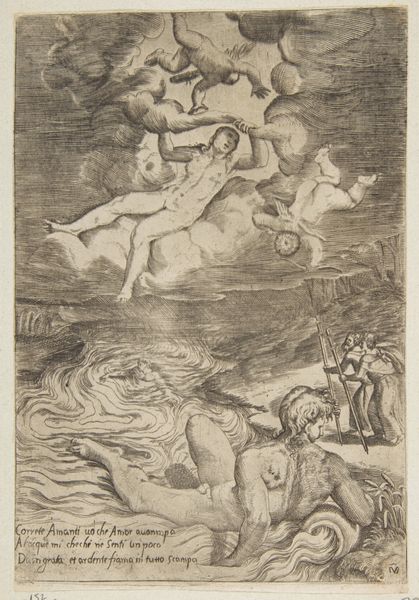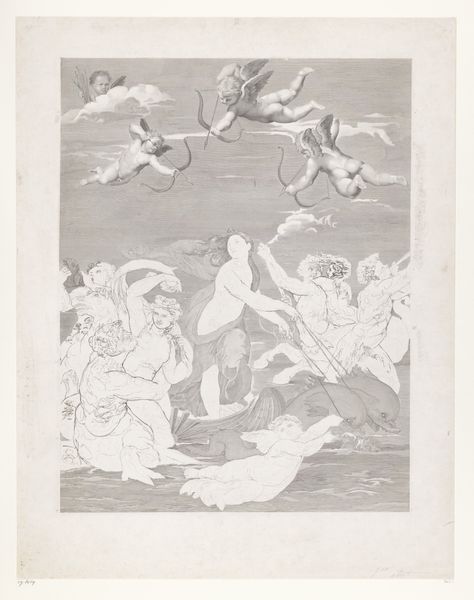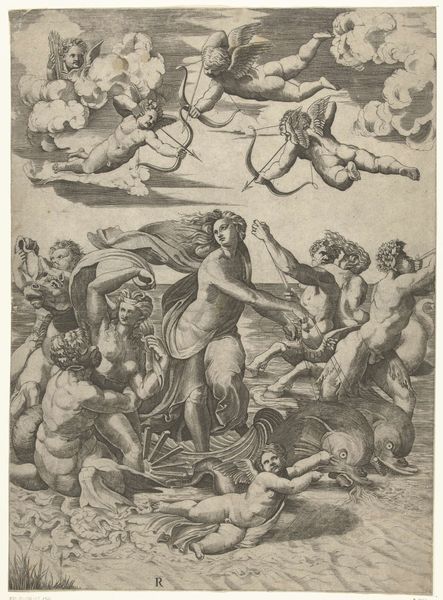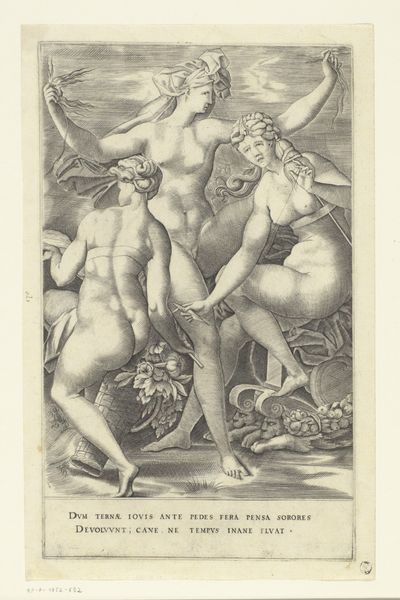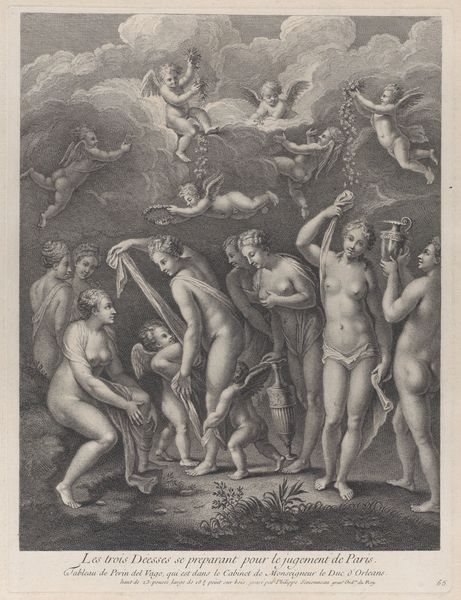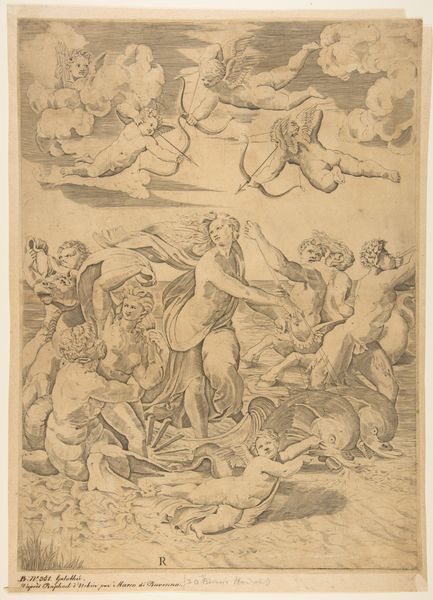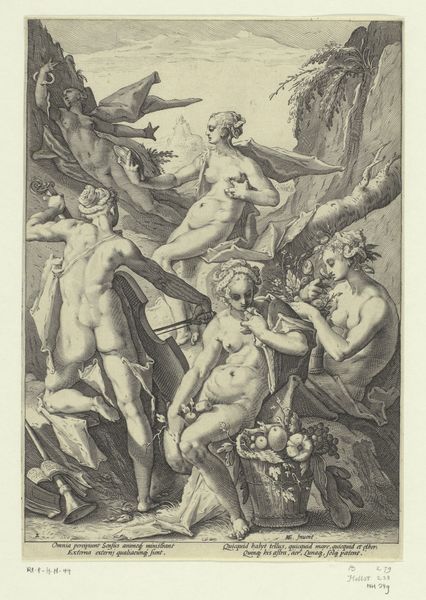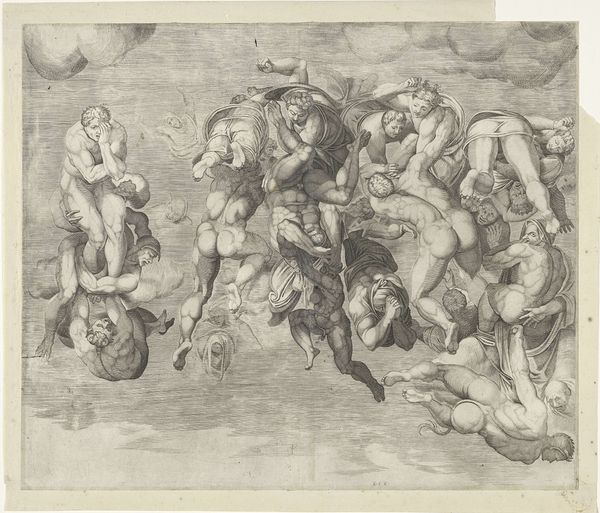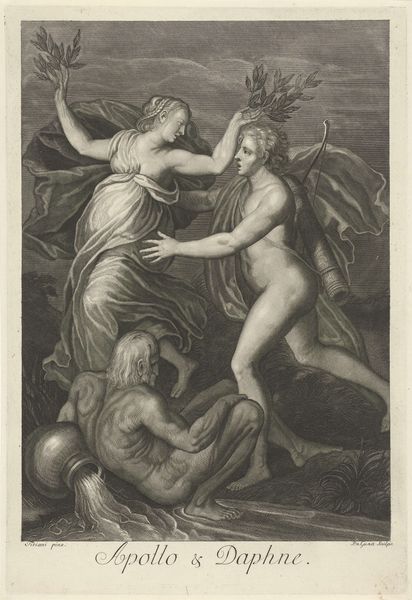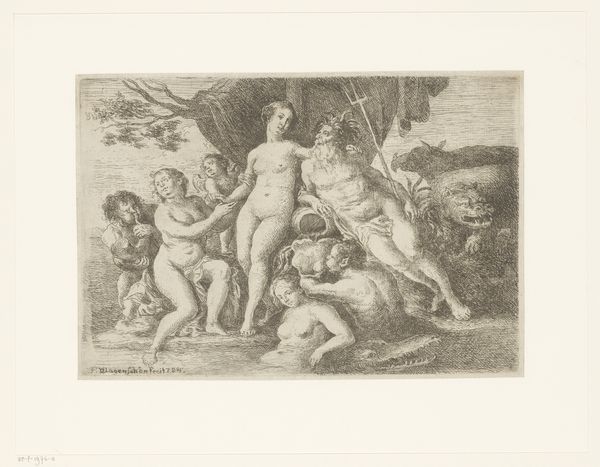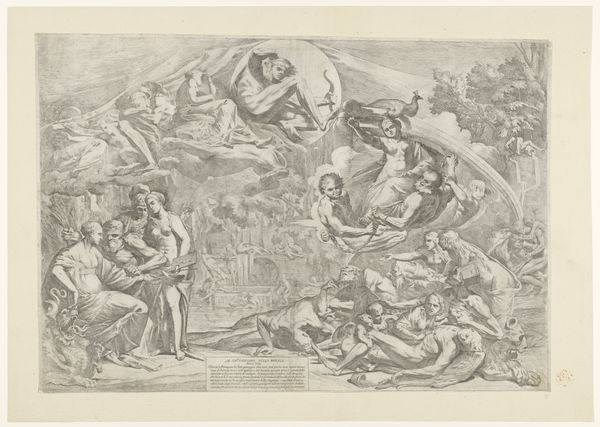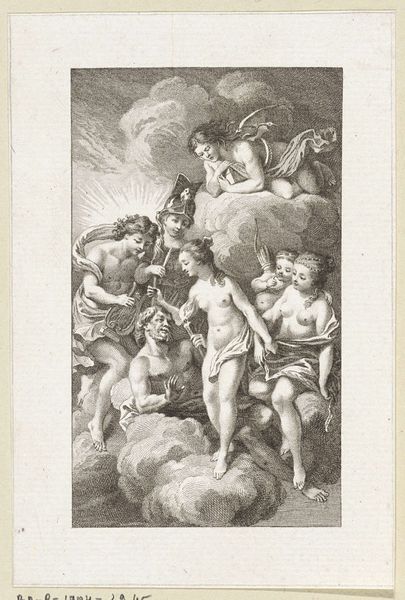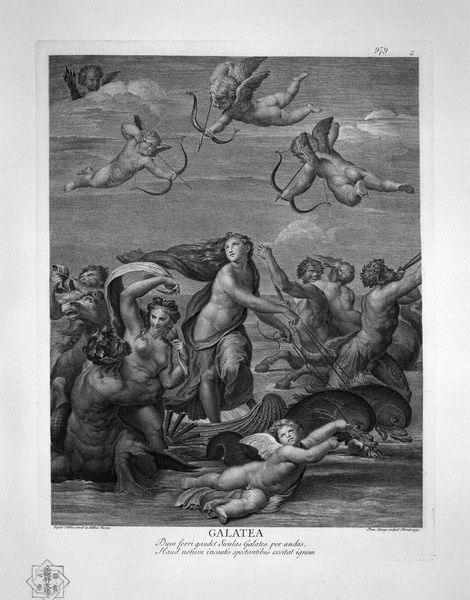
Dimensions: height 697 mm, width 534 mm
Copyright: Rijks Museum: Open Domain
Curator: Gustave Joseph Biot created "Triomf van Galathea" sometime between 1843 and 1905. This engraving is currently housed here at the Rijksmuseum. Editor: Wow, there's a whole aquatic party going on here! I see mythological figures frolicking about. The first thing that strikes me is the energy—it feels so dynamic, almost bursting out of the frame. Curator: The dynamism really speaks to the Baroque influence on the piece. Biot taps into the tradition of allegorical scenes, specifically around mythology, portraying the triumph of Galathea. Looking closely, you'll notice how gender is presented throughout this piece. Editor: Galathea herself looks powerful, regal almost. It is like she’s presiding over the revelry. There's also a sensuality that seems less about seduction and more about embodying a vibrant, unapologetic sense of being. Like she's the embodiment of a summer breeze you know? Curator: I agree. Think of the centaur grappling another figure near the bottom-left. Such interactions open doors to reflect on the historic roles assigned to particular bodies in society, both male and female. How they are allowed, or disallowed to behave. We can look at mythological portrayals such as these to contrast standards over time. Editor: Absolutely. It makes me wonder what kind of commentary Biot might have been aiming at through this joyous depiction. There’s the use of space as well with the way all of those cupids above are almost comically aiming their arrows, suggesting playful jabs rather than declarations of war. What's also great is the range of tonality and textures—from the smooth skin of Galathea to the rougher rendering of the sea creatures, adding real depth to the whole scene. Curator: The varying tonality is skillfully employed and reinforces its narrative impact. But in regards to historical interpretation, understanding Biot's world, even within the relative political stability of the Netherlands during that time, it is vital to observe how social and political undertones emerge through art like this. The engraving doesn’t simply reflect mythological celebration, it refracts the socio-political standards onto its themes and figures. Editor: True, that's what I find so fascinating. This work is an explosion of art that doesn’t shy away from the bodies and characters represented. Something tells me, even after much reflection, each visit with “Triomf van Galathea” will unfold new layers to its narrative. Curator: Indeed. Whether exploring Baroque influence or contemplating modern, intersectional narratives, there’s no singular way to connect with Biot's enduring image.
Comments
No comments
Be the first to comment and join the conversation on the ultimate creative platform.
